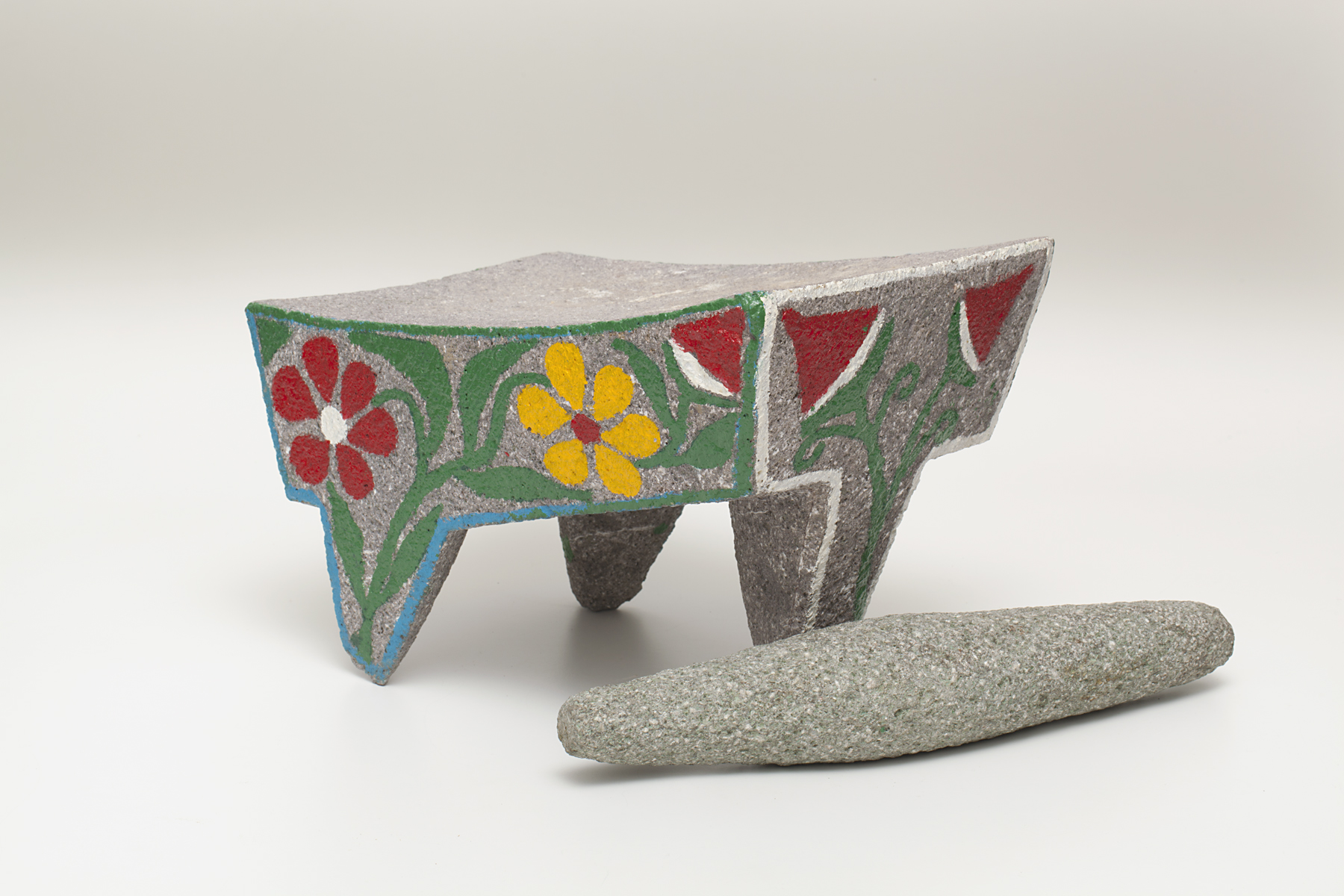mano and metate, unrecorded Valley Zapotec artist
Artwork Overview
unrecorded Valley Zapotec artist, artist
mano and metate,
1989
Where object was made: San Juan Teitipac, Oaxaca, Mexico
Material/technique: stone; carving; paint
Dimensions:
Object Height/Width/Length (Height x Width x Length): a 25 x 25 x 35.5 cm
Object Height/Width/Length (Height x Width x Length): 9 13/16 x 9 13/16 x 14 in
Object Length/Diameter (Length x Diameter): b 37 x 7 cm
Object Length/Diameter (Length x Diameter): 14 9/16 x 2 3/4 in
Weight (Weight): part a) 43.6 lbs
Weight (Weight): part b) 4.6 lbs
Object Height/Width/Length (Height x Width x Length): a 25 x 25 x 35.5 cm
Object Height/Width/Length (Height x Width x Length): 9 13/16 x 9 13/16 x 14 in
Object Length/Diameter (Length x Diameter): b 37 x 7 cm
Object Length/Diameter (Length x Diameter): 14 9/16 x 2 3/4 in
Weight (Weight): part a) 43.6 lbs
Weight (Weight): part b) 4.6 lbs
Credit line: Gift of Robert J. Smith
Accession number: 2007.4942.a,b
Not on display
If you wish to reproduce this image, please submit an image request



